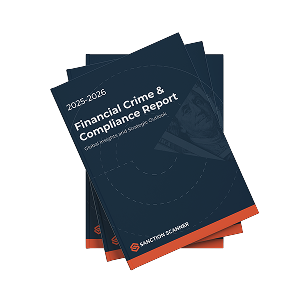The Anti-Money Laundering Act provides a legal framework for detecting and stopping illegal financial activity.
What Is AMLA (Anti-Money Laundering Act)?
Many nations have enacted laws known as the Anti-Money Laundering Act (AMLA) to stop money laundering and related crimes like corruption and the funding of terrorism.
Here are a few noteworthy instances of AMLA used globally:
| Country | Full Law Name | Year Enacted |
| Malaysia | Anti-Money Laundering, Anti-Terrorism Financing and Proceeds of Unlawful Activities Act (AMLA) | 2001 |
| United States | Anti-Money Laundering Act of 2020 (part of NDAA) | 2021 |
| Philippines | Anti-Money Laundering Act of 2001 | 2001 |
| Nigeria | Money Laundering (Prevention and Prohibition) Act (AMLA) | 2022 |
Examples of AMLA by Country (Expanded Table – 2025)
| Country | Full Law Name | Enacted / Last Updated |
| Malaysia | Anti-Money Laundering, Anti-Terrorism Financing and Proceeds of Unlawful Activities Act (AMLA) | 2001 (latest update: 2023) |
| United States | Anti-Money Laundering Act of 2020 (part of NDAA) | 2021 |
| Philippines | Anti-Money Laundering Act of 2001 (Republic Act No. 9160) | 2001 (amended multiple times, latest in 2021) |
| Nigeria | Money Laundering (Prevention and Prohibition) Act | 2022 |
| India | Prevention of Money Laundering Act (PMLA) | 2002 (latest amendment: 2023) |
| Canada | Proceeds of Crime (Money Laundering) and Terrorist Financing Act (PCMLTFA) | 2000 |
| UK | Proceeds of Crime Act (POCA) | 2002 |
| Australia | Anti-Money Laundering and Counter-Terrorism Financing Act | 2006 |
| Singapore | Corruption, Drug Trafficking and Other Serious Crimes (Confiscation of Benefits) Act + MAS AML Notices | 1992 / various |
| South Africa | Financial Intelligence Centre Act (FICA) | 2001 |
| Brazil | Law No. 9.613 – Money Laundering Prevention Law | 1998 (amended in 2012) |
| France | Monetary and Financial Code – AML provisions (Code monétaire et financier) | Ongoing (EU Directives) |
| Germany | Anti-Money Laundering Act (Geldwäschegesetz - GwG) | 2008 (latest update: 2021) |
| Italy | Legislative Decree No. 231/2007 (Implementing EU AML Directives) | 2007 (updated with AMLD6) |
| UAE | Federal Decree-Law No. (20) of 2018 on AML and CFT | 2018 |
| Qatar | Law No. (20) of 2019 on Combating Money Laundering and Terrorist Financing | 2019 |
| Saudi Arabia | Anti-Money Laundering Law (Royal Decree No. M/31) | 2017 |
| Turkey | Law No. 5549 on Prevention of Laundering Proceeds of Crime | 2006 |
| Russia | Federal Law No. 115-FZ “On Countering Legalization (Laundering) of Proceeds from Crime” | 2001 |
| Japan | Act on Prevention of Transfer of Criminal Proceeds | 2007 |
| Indonesia | Law No. 8 of 2010 on Prevention and Eradication of Money Laundering | 2010 |
| Thailand | Anti-Money Laundering Act B.E. 2542 | 1999 |
| Kenya | Proceeds of Crime and Anti-Money Laundering Act (POCAMLA) | 2009 |
| Mexico | Federal Law for the Prevention and Identification of Operations with Illicit Resources | 2012 |
| South Korea | Act on Reporting and Use of Certain Financial Transaction Information | 2001 |
| Argentina | Law No. 25.246 on Money Laundering Prevention | 2000 |
Key Components of AMLA
A number of essential elements are incorporated into AMLA Anti-Money Laundering Acts (AMLA) frameworks in order to effectively combat financial crime. These consist of:
What is Money Laundering
With its precise definition of money laundering and related crimes, AMLA offers a well-organised legal framework for prosecution. This guarantees that any actions pertaining to hiding the source of illegal funds are punishable by law.
Reporting Obligations
FIUs require STRs and CTRs from organisations, including banks, fintech platforms, and designated non-financial businesses.
KYC and Customer Due Diligence (CDD)
Businesses must follow crucial procedures such as KYC and CDD, and these help by:
- Our first item is using trustworthy documentation to confirm the identity of clients.
- Another example is keeping an eye on their financial activities and evaluating their risk.
- The last option on our list is performing more thorough due diligence on high-risk clients, such as entities in high-risk jurisdictions or politically exposed persons (PEPs).
Non-Compliance Penalties
There are serious repercussions from breaking AMLA regulations, such as:
- First, financial penalties that may amount to millions of dollars, depending on the seriousness of the infraction.
- Another repercussion that one can get from breaking AMLA regulations is criminal sanctions like incarceration for those who violate the law.
- The last repercussion we have mentioned on our list is damage to one's reputation, which may result in a decline in market value, a loss of client trust, and the closure of a business.
Global Collaboration
AMLA frameworks promote international cooperation in the fight against financial crime by being in line with Financial Action Task Force (FATF) guidelines. This collaboration consists of:
- Firstly, establishing mutual legal assistance treaties (MLATs) to improve cross-border transparency.
- Another option is coordinating investigations and enforcement actions.
- Last options on our list are exchanging information amongst jurisdictions helps immensely.
Why is AMLA Important?
AMLA is essential to safeguarding the world economy and maintaining financial sector transparency. This is why it's important:
Prevention of Financial System Abuse
AMLA plays a critical role in discouraging practices that have the potential to destabilise financial systems, such as money laundering, fraud, financing terrorism, human trafficking, and political corruption.
Enhanced Detection of Illicit Flows
The AMLA-mandated reporting and monitoring procedures allow authorities to track and freeze illicit funds, which prevents their incorporation into the legal economy.
Alignment with Global Standards
AMLA guarantees global regulatory uniformity and fosters international confidence by following FATF guidelines.
Accountability for High-Risk Industries
To maintain transparency and reduce the risk of financial crime, AMLA places stringent requirements on financial institutions and DNFBPs (Designated Non-Financial Businesses and Professions).
Who Must Comply with AMLA?
Beyond conventional financial institutions, a broad range of companies and industries are subject to AMLA compliance:
Financial Institutions and Banks
Banks must put strong AML procedures in place, keep an eye on transactions, and report any suspicious activity since they are major participants in financial transactions.
VASPs and Cryptocurrency Exchanges
Since cryptocurrencies are being used more and more for illicit purposes like money laundering and financing terrorism, Virtual Asset Service Providers (VASPs) are required to abide by AMLA regulations.
Fintech Businesses
To reduce the risks connected with digital transactions, payment processors, e-wallet providers, and neobanks must abide by AMLA.
DNFBPs, or Non-Financial Businesses
Due to the substantial financial stakes, high-value industries like real estate, accounting and law firms, and luxury goods dealers are vulnerable. To maintain transparency, they must abide by AMLA regulations.
Auction Houses and Casinos
Because of the high value of transactions and the possibility of anonymity, these establishments are frequently the target of money laundering schemes. To reduce these risks, AML compliance is crucial.
Brokers and Insurance Companies
Due to vulnerabilities in long-term investment products that are being used to launder illicit funds, life insurers and brokers are being forced to comply with AMLA more and more.
Businesses that provide financial services (MSBs)
AML procedures must be put in place by currency exchanges, remittance services, and check-cashing companies in order to monitor high-value and cross-border money flows. AMLA frameworks seek to protect the financial system, advance transparency, and counteract the escalating threat of financial crime globally by tackling these crucial areas.
Comparing AMLA with Related Terms
Other terms related to financial crime prevention frequently overlap with AMLA. This is how it's different:
| Term | Full Form | Purpose | Key Difference |
| AMLA | Anti-Money Laundering Act | Legal framework to prevent money laundering | Primary legislation for AML obligations |
| PMLA | Prevention of Money Laundering Act | India-specific AML legislation | India’s version of AMLA |
| CFT | Counter Financing of Terrorism | Preventing funds from supporting terrorist activities | Often specific to terrorism-related financial crime |
| FIU | Financial Intelligence Unit | Government body analyzing STRs | FIU is an enforcement agency, not legislation |
| STR/CTR | Suspicious/Currency Transaction Report | Reporting tools for detecting unusual activity | Compliance tools mandated under AMLA laws |
How Businesses Can Comply with AMLA
It takes strong systems and procedures to navigate AMLA compliance. The practical tactics that companies can use are listed below:
Implement Regulatory Technologies (RegTech)
Make use of tools such as blockchain analytics to track and validate transactions across decentralised networks. Use transaction monitoring software to flag suspicious activity in real-time. Finally, use AI-based solutions to automate anomaly detection and pattern recognition. These technologies improve the accuracy of identifying possible money laundering activities.
Invest in Training and Awareness
Employees benefit from regular training sessions that keep them informed about new rules, emerging threats, and the requirements of the Anti-Money Laundering Act (AMLA).
Perform Risk Assessments
To find high-risk clients, transactions, and jurisdictions, do thorough risk assessments and examine elements like transaction types, client profiles, and areas with a history of money laundering.
Maintain Accurate Records
Making sure that every CDD procedure is properly documented, including KYC checks, helps immensely. Simplifying this procedure and guaranteeing compliance can be achieved with the aid of sophisticated document management systems.
Engage with AML Professionals
To improve your compliance strategy, collaborate with outside consultants, legal teams, or experts in AML regulations since these professionals can help with audits, give advice on complicated cases, and offer insightful information about the most recent regulatory changes.
FAQ's Blog Post
The AMLA aims to prevent and detect money laundering, terrorism financing, and other financial crimes.
Several countries, including Malaysia and the Philippines, have enacted their own AMLA tailored to their financial and legal systems.
Requirements typically include customer due diligence (CDD), suspicious transaction reporting, and maintaining proper financial records.
Financial institutions, DNFBPs, fintech companies, and other regulated entities must comply with AMLA rules.
Violations may result in fines, license revocation, and even imprisonment, depending on the severity and jurisdiction.
AMLA often aligns with FATF recommendations, promoting global cooperation and information sharing to combat cross-border financial crimes.
Yes, in many jurisdictions, AMLA has been expanded to include virtual asset service providers (VASPs) and crypto-related transactions.
Compliance programs should be reviewed and updated regularly, especially when there are changes in regulations or risk exposure.



